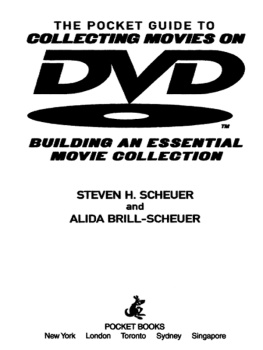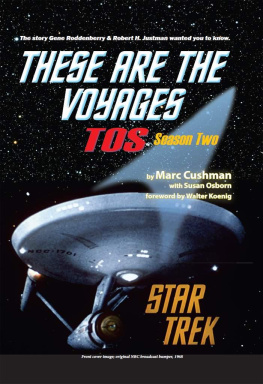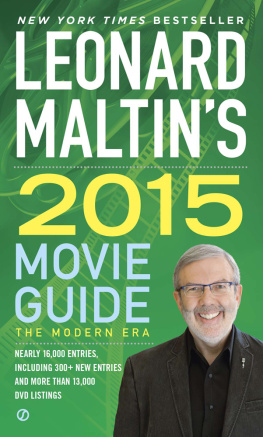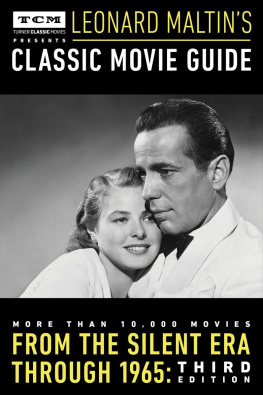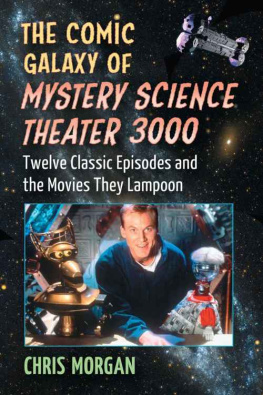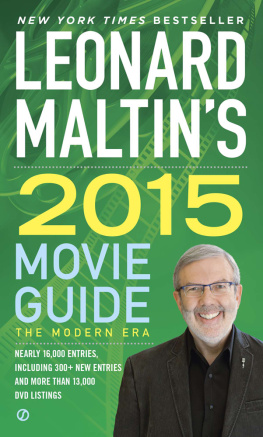Executive Editor: Mark Glubke
Project Editor: Ross Plotkin
Interior Designer: Jay Anning, Thumb Print
The principal typefaces used in the composition
of this book were ITC Weidemann and Helvetica Neue
Copyright 2006 by David Hofstede
First published in 2006 by Back Stage Books,
An imprint of Watson-Guptill Publications,
A division of VNU Business Media, Inc.,
770 Broadway, New York, NY 10003
www.wgpub.com
Library of Congress Control Number: 2006928029
eISBN: 978-0-307-79950-0
All rights reserved. No part of this publication may be reproduced or used in any form or by any meansgraphic, electronic, or mechanical, including photocopying, recording, taping, or information storage and retrieval systemswithout written permission from the publisher.
v3.1
Contents
APPENDIX A
Merry Christmas, You Big TV Geek
APPENDIX B
Ten Retro Programming Nights
Acknowledgments
Special thanks go out to Robert Berg, Craig Byrne, and Jack Condon for their expertise and writing contributions on some of the series listed in this volume. My own research was aided immeasurably by the many studios that provided DVD sets for review, and by the staff at the Museum of Television and Radio in Los Angeles. I am grateful to Mark Glubke at Watson-Guptill for his suggestions on how to create a guidebook of this scope from scratch.
Introduction
When the DVD was introduced in 1998, no one could have foretold the role that television would play in its success. The original goal was to replace videocassettes with a digital format that could hold a movie plus extra features, at a price that would make buying the DVD a tempting alternative to renting the film at the video store. And though movie sales have been brisk, it has been collections of television series that have shocked industry watchers with their popularity. Fans are routinely paying anywhere from $30 to $120 for full-season sets of their favorite shows.
For the first time in the mediums history, television has become a collectible commodity. This is wonderful news, especially for those old enough to remember when the only access we had to favorite episodes of favorite TV series was when they aired in syndication. Back then, we were lucky to be reunited with these old friends once or twice in a year. But today, thanks to DVD, we can watch Lucy work in the chocolate factory, the Monkees sing Daydream Believer, and Ross and Rachel get together (or break up) whenever we choose.
Since May 2000, when first-season sets of The X-Files and Sex and the City became the first series to be collected on DVD, more than 400 other sets have reached the market. According to Video Store Magazine, sales of TV DVDs are outpacing all other categories, surpassing $2 billion in 2004. What once seemed a niche market is now firmly entrenched in the mainstream and contributes big bucks to the bottom line of various studios, reports the Los Angeles Daily News.
Sales are spread across the full spectrum of television programming. Recent shows that play daily in syndication, such as Friends and The Simpsons, sell well. Shows that appeal to younger audiences, such as Buffy the Vampire Slayer, rank with the formats top sellers. Collectors appreciate that no television library is complete without the all-time classics, including The Dick Van Dyke Show and The Honeymooners. Even short-lived shows that failed in their primetime runs, such as Sports Night and Freaks and Geeks, have found an enthusiastic following on DVD.
What Youll Find in This Book And What You Wont
5,000 Episodes and No Commercials: The Ultimate Guide to TV Shows on DVD lists and rates on a 05 star scale every prominent show released on DVD, whether in season sets, individual episodes, or best of compilations. The objective is to let TV fans know what is out there, and whether its worth picking up.
Different fans have different expectations from the format. Most are just delighted to add their favorite shows to a home entertainment library, but some will refuse to buy a series if the audio is Dolby Digital 2.0, rather than 5.1. While it would be wonderful to have each DVD set released with the highest-quality picture and sound achievable in the format, the majority of consumers dont have a home entertainment system capable of telling the difference. But buyers do have a right to expect that the video and audio quality of their DVDs should be equal or superior to how the series looked when originally broadcast, and it is by that standard that they are judged here.
Music rights is another ongoing issue. As television networks could not have foreseen the possibility that their shows would be packaged for the retail market, no effort was made to secure the rights to the music played in some series beyond their original and syndicated runs. This is a particularly thorny issue for shows that incorporate a variety of popular songs, such as 21 Jump Street, Moonlighting, and WKRP in Cincinnati. In some cases an effort was made, often at great expense, to preserve the original music, while other studios opted to delete the more expensive soundtrack in favor of a generic equivalent. These instances have been cited here in the text, so the potential buyer can make an informed decision.
While many fans might let the studios slide on a few song substitutions, there is one practice that could constitute a deal breaker, and that is the use of syndicated-episode cuts. One might expect this from the public-domain releases, slapped together by quick-buck distributors who had neither the budget nor the inclination to do the job right. But this egregious practice has also made its way into the mainstream, on such high-profile series as Roseanne and The Cosby Show. If DVD is to be regarded as an archival format for the television medium, there is no excuse for the release of incomplete shows.
A
The A-Team (19831987)
Season 1 (14 episodes on 4 discs): 


Season 2 (22 episodes on 3 discs): 


Season 3 (25 episodes on 3 discs): 


Season 4 (22 episodes on 3 discs): 




